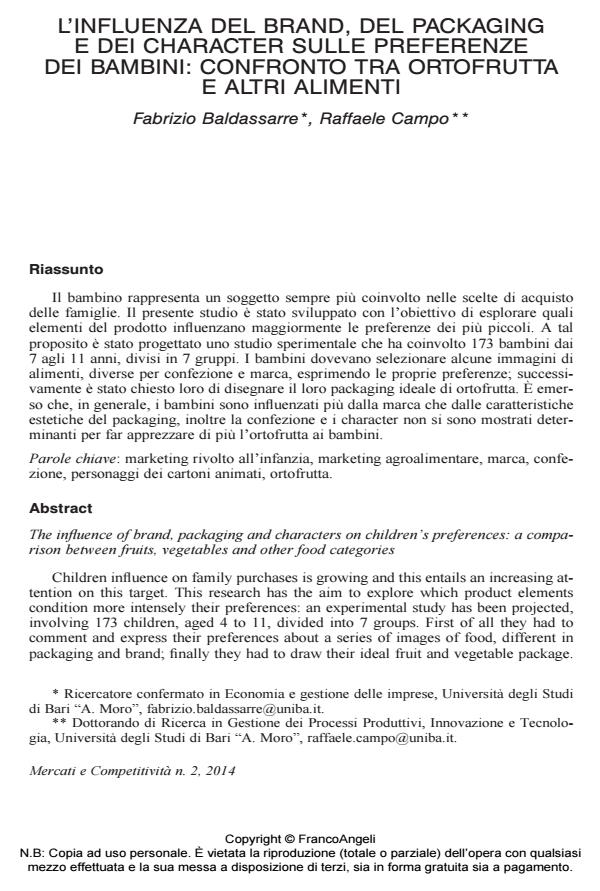The influence of brand, packaging and characters on children’s preferences: a comparison
Journal title MERCATI E COMPETITIVITÀ
Author/s Fabrizio Baldassarre, Raffaele Campo
Publishing Year 2014 Issue 2014/2
Language Italian Pages 21 P. 129-149 File size 161 KB
DOI 10.3280/MC2014-002007
DOI is like a bar code for intellectual property: to have more infomation
click here
Below, you can see the article first page
If you want to buy this article in PDF format, you can do it, following the instructions to buy download credits

FrancoAngeli is member of Publishers International Linking Association, Inc (PILA), a not-for-profit association which run the CrossRef service enabling links to and from online scholarly content.
Between fruits, vegetables and other food categories Children influence on family purchases is growing and this entails an increasing attention on this target. This research has the aim to explore which product elements condition more intensely their preferences: an experimental study has been projected, involving 173 children, aged 4 to 11, divided into 7 groups. First of all they had to comment and express their preferences about a series of images of food, different in packaging and brand; finally they had to draw their ideal fruit and vegetable package. The results highlight that, in general, brand influences children more deeply than the aesthetic features of a product, moreover packaging and characters are not decisive to make children appreciate fruits and vegetables. Keywords: kids marketing, food marketing, brand, packaging, characters, fruits and vegetables.
Keywords: Marketing rivolto all’infanzia, marketing agroalimentare, marca, confezione, personaggi dei cartoni animati, ortofrutta.
- A Play-Based Methodology for Studying Children: Playfication Raffaele Campo, Fabrizio Baldassarre, Rosalind Lee, in Systemic Practice and Action Research /2019 pp.113
DOI: 10.1007/s11213-018-9455-x
Fabrizio Baldassarre, Raffaele Campo, L’influenza del brand, del packaging e dei character sulle preferenze dei bambini: confronto tra ortofrutta e altri alimenti in "MERCATI E COMPETITIVITÀ" 2/2014, pp 129-149, DOI: 10.3280/MC2014-002007